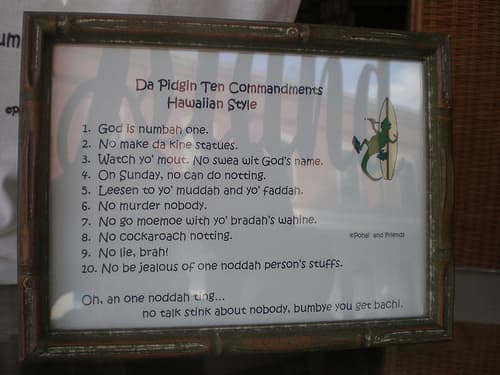

Since none are coming to your assistance, I'll contribute the little I know from my studies related to teaching Latin.Įnglish is definitely not a pidgin language, insofar as pidgin means a grammatically simplified form of a language, used for communication between people not sharing a common language. I think this is an opinion-soliciting question, best answered by linguists. Perhaps the English of tomorrow will look as much like today’s English as Chaucer looked like Beowulf. The Last Lingua Franca: English Until the Return of Babel.I’ve found several articles on the notion, but they are unclear about what is happening today with World English and how that relates to what happened after 1066. I do wonder whether in today’s world of English becoming the lingua anglica of common communication as French gave rise to the lingua franca of yesteryear, such a creolization might not be recurring, at least in certain places with a dominant alternate language, such as in India or Singapore. Related musings of my own that I don’t expect answers for follow. Was it such, and if so, which one was it: a creole or pidgin? If so, when did it stop being such - or didn’t it stop being such? Gullah could survive because it was relatively self-contained and isolated from the rest of the world." (Zoltán Kövecses, American English: An Introduction.Because Middle English was a hodgepodge mélange of Old English (a Germanic tongue) and Norman French (a Romance language), it seems like Middle English was actually a kind of pidgin or creole. , invented a form of English, West African Pidgin English, which incorporated many features from West African languages. These slaves, who spoke different African languages. It is a language that is probably most similar of all varieties of Black American English to the original creole English that was used in the New World and the West African Pidgin English of the earliest slaves. The Creole language of the large Black population in the region is called Gullah, spoken by about a quarter of a million people. However, some of the slaves stayed in the Charleston area, on what is called the Sea Islands. Many slaves first arrived here and then they were transported inland to the plantations. "The city that had become the center of the 'slave trade' was Charleston, South Carolina. However, like them, and despite its usefulness, vigor, and wide distribution, Pidgin tends to be regarded as debased English." (Tom McArthur, The Oxford Guide to World English.

"Because many of its features are close to those of Creole in the Americas, some researchers have proposed a family of 'Atlantic creoles' that includes Pidgin in West Africa, Gullah in the U.S., and the various patois of the Caribbean. It originates in 16th-century contacts between West Africans and English sailors and traders, and is therefore as old as so-called ' Modern English.' Some WAPE speakers, especially in cities, do not speak any traditional African language: it is their sole means of expression.

Among the local varieties are Aku in Gambia, Krio in Sierra Leone, Settler English and Pidgin English in Liberia, Pidgin (English) in Ghana and Nigeria, and Pidgin (English) or Kamtok in Cameroon. "WAPE is spoken in a geographical continuum from Gambia to Cameroon (including enclaves in French- and Portuguese-speaking countries) and in a vertical continuum with WAE at the top.


 0 kommentar(er)
0 kommentar(er)
